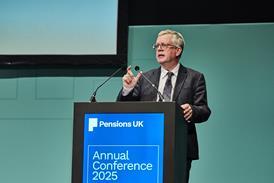The shift towards defined contribution is a global trend, with assets in six of the world’s major pension markets rising to 47 per cent of total retirement assets at the end of 2013 from 38 per cent in 2003, according to Towers Watson data.
However, as schemes expand geographically, companies and their employees are encountering a growing and consistent set of challenges.
The Organisation for Economic Cooperation and Development has identified several common difficulties:
-
Employees lack confidence in DC plans. In State Street Global Advisors’ 2014 Transatlantic Survey, only 31 per cent of US participants were confident they had enough DC savings to provide a comfortable retirement. The numbers were even lower in the UK (26 per cent) and Ireland (16 per cent).
-
Contribution levels are too low. Towers Watson’s global benefit attitudes survey 2014 found five out of six employees worldwide say they save less for retirement than they should.
-
People struggle to choose appropriate investments. Less than a quarter of scheme members surveyed by SSGA in the US, UK and Ireland say they are knowledgeable about financial affairs.
-
Investment options may not be up to the task. Funds may provide insufficient protection and excessive volatility, and retirement income options may be unclear or inadequate. For example, only 23 per cent of members responding to our biannual DC investor survey 2013 said their scheme trustee is effective at helping with the transition from savings to income.
The challenges may be consistent, but DC schemes generally are not.
Policy convergence
Countries’ cultural differences and varying DC-related policies tend to preclude uniformity.
That said, policies governing certain aspects of DC schemes have converged somewhat, possibly enabling scheme trustees to streamline plan management across borders.
For example, many countries have put laws into place that allow for auto-enrolment and contribution increases, as well as for the use of well-diversified default investments.
Companies may benefit from exploring the possibility of integrating plan management across multiple countries.
Greater centralisation can help trustees run their DC scheme more efficiently and effectively, while delivering stronger, more consistent benefits to members.
To take advantage of these opportunities, and to sidestep the pitfalls, fiduciaries need to understand where integration is possible, desirable and suited to their company.
There are pros and cons to both scenarios, from either end of the spectrum.
At one end, when looking at the investment options, economies of scale can lead to lower fees, which minimise costs and improve outcomes for members.
However, local regulations governing investment options, delivery structures – such as wrappers in the UK and Australia – taxation and other investment-related matters can vary considerably.
At the other end, when looking at communication, sending consistent messages about the scheme and its objectives helps build a cohesive company culture and will be appreciated by staff who relocate internationally.
Greater centralisation can help trustees run their DC scheme more efficiently and effectively, while delivering stronger, more consistent benefits to members
However, countries’ different product offerings, languages, cultures and regulations may require materials to be tailored to local markets.
Case in point
Companies that operate DC schemes in multiple countries may take a spectrum of approaches, from highly centralised to highly decentralised.
In fact, in one global industry two competitors – household names with similar market capitalisations, revenues, geographic footprints and workforces – take opposite approaches to managing their global DC schemes.
One firm integrates its schemes globally to the greatest extent possible, while the other treats these as if they were entirely unconnected.
With the increasing popularity of DC schemes across the world, a move towards centralised management will become more attractive for large companies, yet there is still no one-size-fits-all solution.
Companies globally need to examine their own specific DC schemes to determine the degree of consolidation that is best for that particular business.
Only once the scheme’s fundamental objectives are clearly defined can the right approach for a specific company be determined.
Nigel Aston is head of European DC at State Street Global Advisors






















